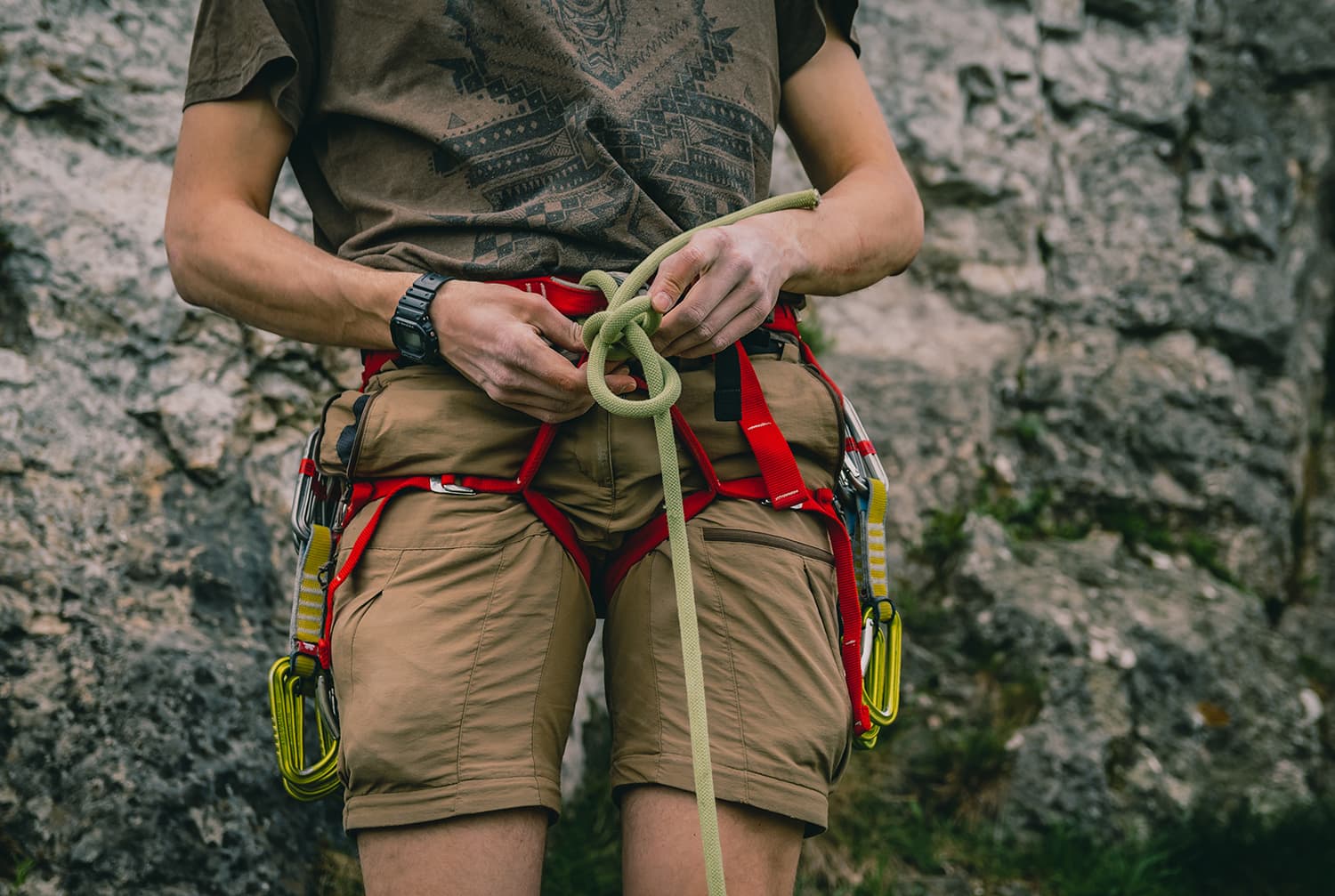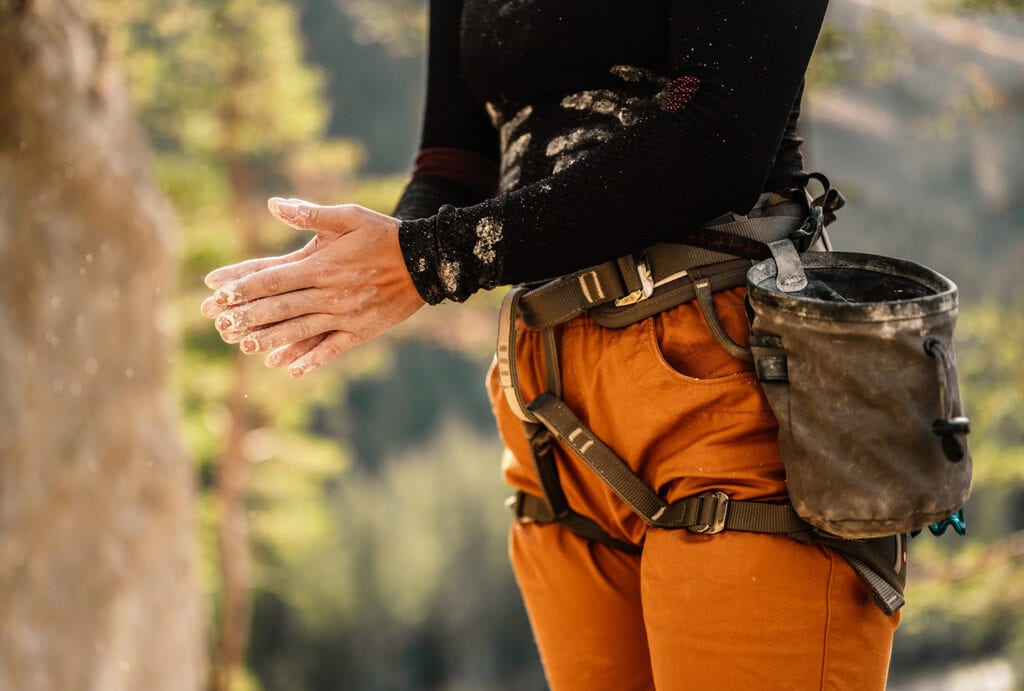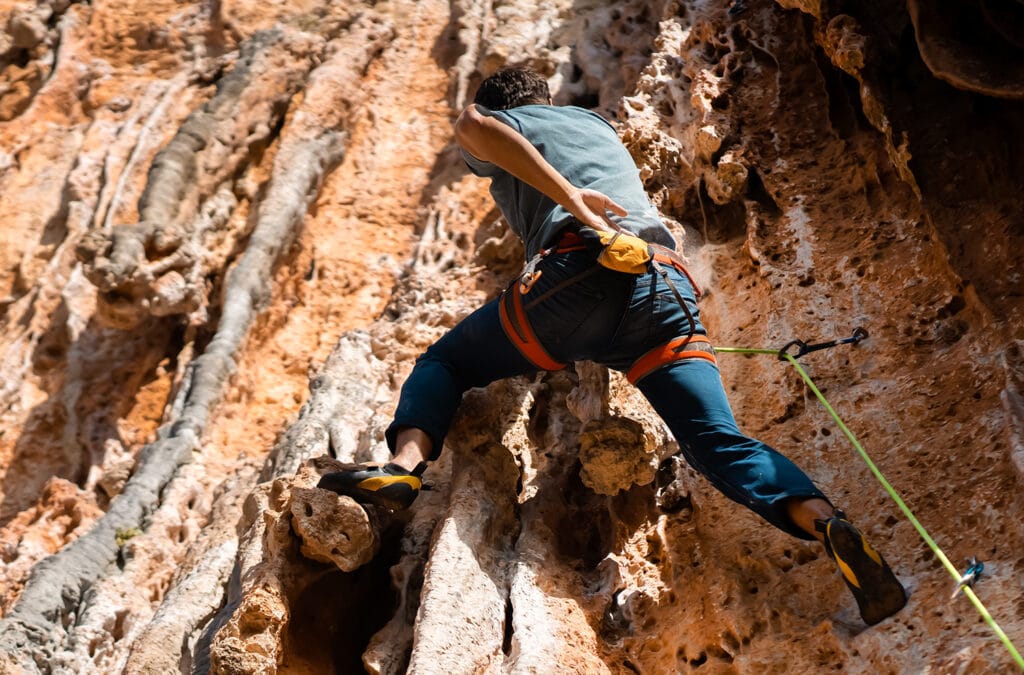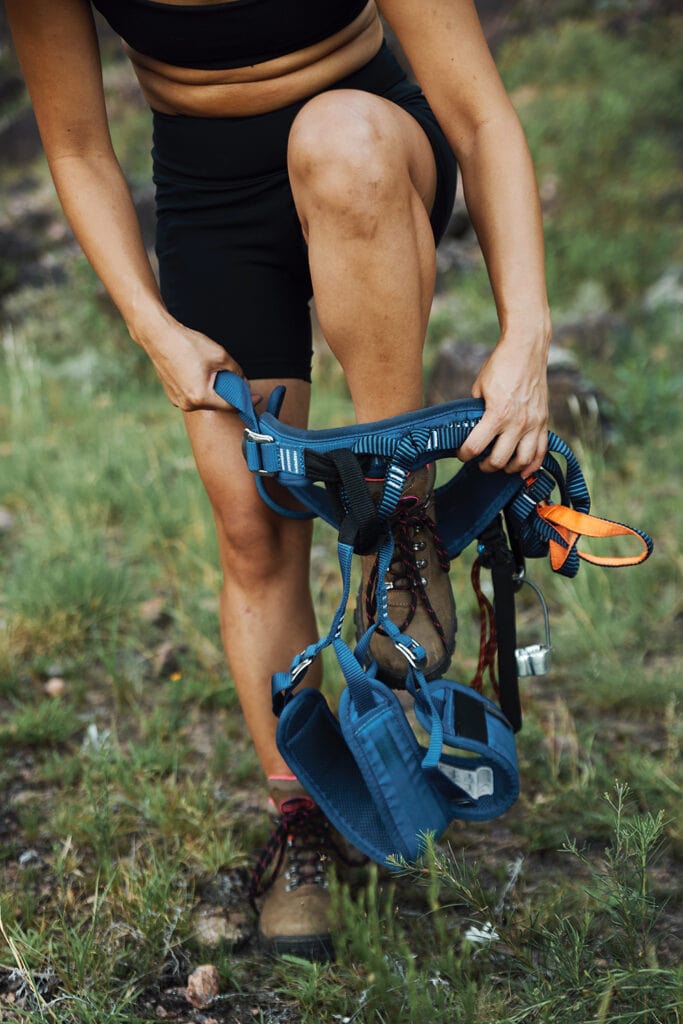When to Replace Your Climbing Harness? (2024 Guide)

Published on: 06/14/2023
Climbing harnesses are a critical piece of equipment for every climber, ensuring safety and support during each climb. But did you know that the lifespan of your harness can vary greatly depending on various factors? In this comprehensive guide, we will explore these factors and provide valuable insights and tips to help you determine “how long do climbing harnesses last” and when it’s time to replace your gear.
Understanding Climbing Harness Lifespan
A climbing harness’ average lifespan ranges from 1-3 years if in use and up to 10 years if properly stored and unused. However, its actual lifespan can be influenced by several factors, such as the model, practice type, and overall environment.
Replacing your climbing harness in due time is crucial for your safety. Your life and your climbing partner’s depend on it! In this section, we will look into the factors that affect harness lifespan and how to identify when it’s time to retire it.

Brand and Model
There are noticeable differences in comfort and versatility among various brands of climbing harnesses, such as Petzl, Black Diamond, Arc’teryx, and Edelrid.
While all harnesses adhere to the same certifications and should be equally safe, each manufacturer has its own guidelines and recommendations for retiring their climbing harnesses. These should be considered alongside other factors, such as usage frequency, history and important events (e.g., massive whipper), and overall care.
Always refer to the instructions provided when you buy the climbing harness. If you lost the notice, contact the manufacturer and provide them with the serial number of the harness to receive personalized guidelines.

Climbing Type and Fall Intensity
Your type of climbing will have a direct impact on the longevity of your harness. Climbers who mainly top rope can keep their harness longer than lead climbers. If you’re among the latter, you should keep track of big falls to decide when to retire your climbing harness.
Top Roping
Top roping is a type of climbing where the rope is anchored above the climber at the top of the climb. As a result, the fall factor is low, meaning the impact force on the harness is less likely to damage it.
Lead Climbing
On the other hand, with lead, the climber is often located above the last anchor. As a result, falls will have a higher fall factor resulting in more force exerted on the harness, causing more severe damage. Just like with ropes, retiring your harness immediately is recommended if it sustains a severe fall with extreme loads.
Anything above a fall factor 1 should warrant a thorough inspection, looking for obvious damage, while you should retire your harness immediately if it sustains a factor 2 fall. Also, consider replacing your harness annually if you regularly take large falls (fall factor > 0.5).

Frequency: Regular vs. Occasional Climbers
The frequency of climbing also affects the lifespan of a climbing harness. Regular climbers who practice climbing multiple times a week should retire their harness no later than two years after its first use. If you’re climbing every day, consider replacing your harness every year.
On the other hand, occasional climbers who only go to the gym or crag once a week or a few times a month can wait three to five years before retiring their harness.
Environment: Rock, Gym, Sea, and Sun
Outdoor climbing exposes your harness to more severe temperatures and weather conditions than indoor climbing, impacting its lifespan. Also, the abrasive nature of rocks can create earlier wear with friction. For example, it’s not uncommon for the harness fabric to scratch against the rock when performing climbing moves.
On the other hand, the artificial walls and holds of climbing gyms are less sharp and, therefore, less likely to damage your harness.
Also, beware of salty environments like the seaside. Salt is a powerful corrosive, and although nylon is quite resistant to it, the metal of the harness buckles is much less so and can rust over time.
Inspecting Your Climbing Harness for Damage

Regularly inspecting your harness for wear and tear is crucial to ensure your safety by knowing when to retire it. Particular attention should be given to the tie-in and belay loops that receive the most loading force when climbing and belaying.
In this section, we will go through the different areas of your harness that require inspection and the visible signs of damage to look for.
Note: knowing how to inspect a climbing harness is critical if you plan to buy a used one. Check out our detailed guide on the topic.
Tie-In Points and Fabric Wear
When inspecting your harness, look for signs of wear and tear, such as frayed or worn fabric, discoloration, damage to the tie-in points (i.e., belay loop and tie-in loops), loose or cut threads, and excessive wear like tears, cuts, and abrasions.
Every part of the harness is important, including the leg loops.
Checking for Frayed Stitching
Frayed stitching on a climbing harness is another sign of wear and tear that should not be overlooked. To inspect your harness for frayed stitching, look for loose or misaligned stitching, visible damage, and loose, worn, cut, or torn threads. If you find any of these signs, you should retire the harness immediately.
Metal Buckles
Your harness contains a few metal buckles to adjust it around your waist and legs and connect fabric parts together. These are critical points of failure that should not be overlooked.
As mentioned earlier, climbers who practice near the ocean or the sea should be careful that the buckles don’t rust from the salty environment over time.
Even if you don’t practice in such conditions, you should still pay attention to the state of your buckles. Look for any significant deformation or cracks that could impact the structural integrity of the harness.

Cleaning and Caring for Your Climbing Harness
Cleaning and caring for your harness is essential to prolong its life and ensure your safety during climbs. Proper maintenance can prevent potential accidents and extend the lifespan of your climbing gear.
Also, it’s easier to inspect a harness for wear, tear and frayed stitching when it’s clean, allowing you to make a more informed decision on whether to retire it.
This section will discuss the importance of cleaning and caring for your harness and provide tips on how to do so effectively.
Hand vs. Machine Wash
Hand washing is generally recommended over machine washing for cleaning your climbing harness. To hand wash your harness, use lukewarm water and mild soap, then air dry it in an area without direct sunlight exposure.
If you prefer to machine wash, use the gentle cycle without spin at 30°C, and do not use detergents. Black Diamond and Petzl confirm that machine washing of their harnesses is acceptable, provided you follow these guidelines.
Regardless of your chosen method, ensuring the climbing harness is completely dry before using it again is essential. Indeed, wet nylon is less resistant to loads.

Drying and Storing After Cleaning
Once your harness has been washed, it should dry over the clothesline. The harness should be dried in the open air without exposure to direct sunlight or an additional heat source. It’s imperative not to place it in the tumble dryer or over a radiator.
After drying, ensure the harness is stored properly in a dry, dark, and cool place, away from potentially corrosive substances (e.g., cleaning products and harsh chemicals).
Following these guidelines will help maintain the integrity of your harness and prolong its lifespan.
Summary
In conclusion, the lifespan of a climbing harness depends on various factors such as the model, the intensity of your falls, and the frequency and location of your sessions.
Proper care, regular inspection, cleaning, and adherence to the manufacturer’s recommendations are crucial to trust your harness completely. In any case, use common sense at all times. If you have any doubts about the safety of your harness, it’s better to buy a new one. A good harness costs less than $100, so it’s a small price for peace of mind.
